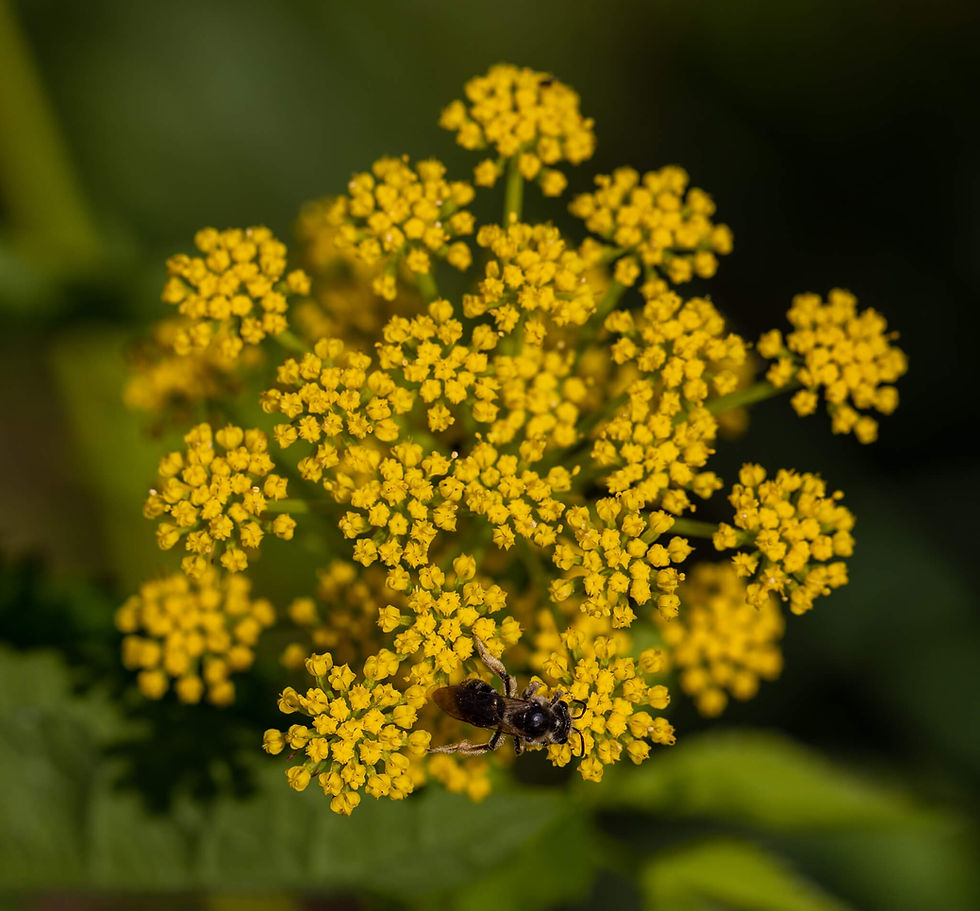Golden Alexanders
- Hope Meadow
- May 16, 2021
- 2 min read
Hope Meadow had an exciting yellow flower bloom this spring, Golden Alexanders (Zizia aurea)! The Golden Alexander is a native plant to Pennsylvania and is one of the host plants for Black Swallowtail butterflies and is part of the carrot family. The native seed mix that we planted in 2019 contained Golden Alexander seeds, but we did not see them boom last year. The seeds require cold stratification to germinate, meaning they need to “feel” the cold and hot cycles of our winter before they can grow into a plant. The plant will germinate the first year but will not flower until the second year. You can skip the wait and buy this plant as a seedling at many native plant nurseries. The Alexanders are short-lived but can bloom from April to August. The ones in the meadow are starting to go to seed, but we may see more plants that bloom in series all summer long. The plant generally prefers wet soil but is tolerant of dry soils and full sun to partly sunny.
The way to distinguish this plant from other yellow flowers is to look at the leaves and flower clusters. The leaves are divided into threes, twice in the upper leaves and divided once in the lower leaves. The flowers are clustered into a flat-topped flower head, as shown in the photos. The seeds will add an attractive purple color to the meadow.
The Golden Alexander could be confused with the non-native Field Mustard (Brassica rapa) or the non-native Garden Yellowrocket (Barbarea vulgaris). Garden Yellowrocket is what is often seen in early spring along the roadsides in Lancaster. This plant has very little to no benefit to any insects or pollinators and was tested as biological insect control for the diamondback moth because it will kill the larvae when they feed on the plant. A few do grow in Hope Meadow, and the differences can be examined between the two plants.













sd